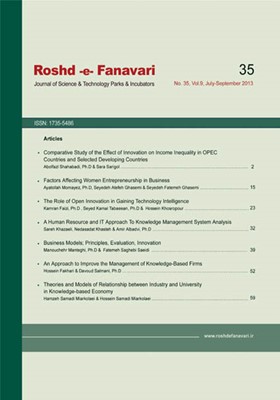-
-
List of Articles
-
Open Access Article
1 - Comparative Study of the Effect of Innovation on Income Inequality
Abolfazll Shahabadi Sara Sarygol -
Open Access Article
2 - Factors Affecting Women Entrepreneurship in Business
Ayatollah Momayezz Seyed Atefe Ghasemi Seyed fatemeh Ghasemi -
Open Access Article
3 - The Role of Open Innovation in Gaining Technology Intelligence
Kamran Feyzi Seyed kamal Tabatabaeiyan Hosein Khosropour -
Open Access Article
4 - A Knowledge Management System Analysis: Using Human Resources and Technology Approaches
Sareh Khazaeli Neda sadaat Khasteh Amir Albadavi -
Open Access Article
5 - Business Models; Principles, Evaluation, Innovation
Manochehr Manteghi Fatemeh Sabeti Saeedi -
Open Access Article
6 - An Approach to Improve the Management of Knowledge-Based Firms
Hosein Fakhari Davood Salmani -
Open Access Article
7 - Theories and Models of Relationship Between Industry and University in Knowledge-based Economy
Hamzeh Samadi Hosein Samadi Miyarkalaei
-
The rights to this website are owned by the Raimag Press Management System.
Copyright © 2017-2025







